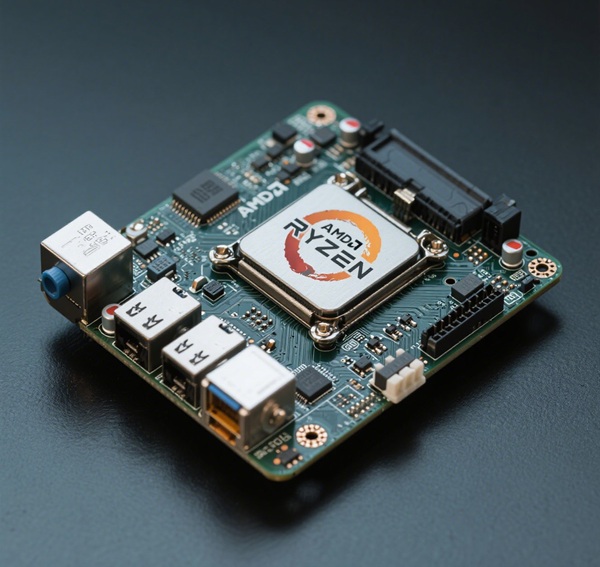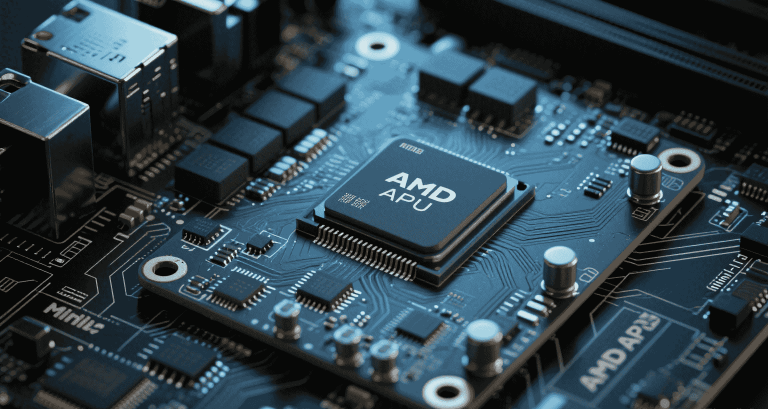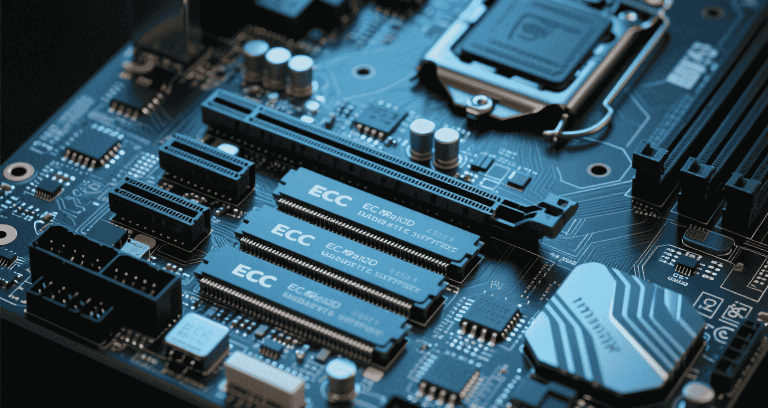Mini-ITX Boards for AMD Ryzen: Selection and Integration Guide

Table of Contents
- Introduction
- Ryzen Platform Overview
- Mini-ITX Form Factor Essentials
- Core Selection Criteria
- Recommended Mini-ITX Ryzen Boards
- Thermal Management Strategies
- Power Supply Considerations
- Reliability and Manufacturing Quality
- Budget and Midrange AM5 Options
- Case Fitment and Integration
- Embedded and Industrial Applications
- Upcoming Developments
- Conclusion and Expert Recommendations
- References and Resources
Introduction
As hardware engineers and embedded system integrators, you’re expected to deliver robust, high-performance computing in increasingly constrained spaces. AMD Ryzen CPUs have proven themselves as the go-to platform for compact systems, but pairing them with Mini-ITX motherboards requires precise planning. This guide will equip you with detailed criteria, model recommendations, and thermal and electrical considerations to build reliable Mini-ITX Ryzen systems.
Ryzen Platform Overview
This section outlines the Ryzen platform generations, socket compatibility, and chipset capabilities. Understanding these technical foundations ensures you select boards that meet your performance and longevity requirements.
AM4 Platform and Chipset Overview
| Chipset | PCIe Support | USB Ports | Notes |
|---|---|---|---|
| B450 | PCIe 3.0 | 10 | Proven stability and budget-friendly |
| B550 | PCIe 4.0 | 12 | Full PCIe 4.0 compatibility |
| X570 | PCIe 4.0 | 12+ | Advanced I/O and active cooling |
BIOS Tip: Many B450/B550 boards require BIOS updates for Ryzen 5000 support. Confirm BIOS Flashback capabilities before ordering.
AM5 Platform and Chipsets
| Chipset | PCIe Lanes | DDR5 | Key Features |
|---|---|---|---|
| B650 | PCIe 5.0 (GPU or SSD) | Yes | Balanced mainstream features |
| B650E | PCIe 5.0 (GPU + SSD) | Yes | Extra PCIe bandwidth |
| X670 | PCIe 5.0 (GPU only) | Yes | Higher I/O options |
| X670E | PCIe 5.0 (GPU + SSD) | Yes | Maximum connectivity |
Adopting AM5 also means preparing for PCIe 5.0’s stricter signal integrity requirements and DDR5’s evolving compatibility landscape.
Mini-ITX Form Factor Essentials
This part introduces Mini-ITX’s mechanical and layout constraints. Familiarity with these standards ensures your Ryzen system integrates seamlessly into SFF enclosures.
Physical Layout
Mini-ITX uses a 170mm x 170mm footprint with four mounting points and ATX-compatible rear I/O dimensions (99mm x 44mm).
Design Trade-offs
- Single PCIe x16 slot
- Two DIMM slots (max 64–96GB)
- Limited VRM surface area, complicating cooling for CPUs over 100W
Note: Always verify your enclosure’s airflow capabilities before committing to a high-core-count Ryzen CPU.
Core Selection Criteria
In this section, I’ll help you evaluate the most critical factors when choosing a Mini-ITX Ryzen board, from power delivery to advanced I/O support.
Power Delivery and VRM Cooling
Ryzen 9 chips can sustain 120W+ loads. Look for motherboards with robust VRM heatsinks and ideally heatpipe cooling.
Memory Compatibility
| Memory Type | AM4 Support | AM5 Support |
|---|---|---|
| DDR4 | ✔️ | ❌ |
| DDR5 | ❌ | ✔️ |
High DDR5 frequencies (6000+ MT/s) often require BIOS tuning and validated modules.
Storage Interfaces
- M.2 PCIe 4.0 on B550/X570
- M.2 PCIe 5.0 on B650E/X670E
- Usually 2 M.2 slots and 4 SATA ports
Connectivity and I/O
Evaluate Wi-Fi 6E, 2.5G LAN, and USB4 readiness, especially for embedded and industrial systems.
PCIe 5.0 Integration
Confirm Gen5 riser compatibility and plan for extra thermal output from SSDs and GPUs.
Recommended Mini-ITX Ryzen Boards
Below, you’ll find vetted recommendations across AM4 and AM5 platforms to suit varying budgets and workloads.
AM4 Options
- ASUS ROG Strix B550-I – Solid VRM and I/O
- Gigabyte B550I AORUS Pro AX – Good BIOS support
- ASRock B550 Phantom Gaming-ITX – Cost-effective and reliable
AM5 Premium Boards
- ASUS ROG Strix B650E-I – PCIe 5.0, DDR5, Wi-Fi 6E
- Gigabyte B650I AORUS Ultra – Balanced thermals
- ASRock B650E PG-ITX WiFi – Value-focused design
Budget AM5 Boards
- ASRock A620I WiFi – Limited PCIe lanes, suitable for midrange CPUs
Thermal Management Strategies
This section helps you plan CPU and VRM cooling to maintain performance under sustained load.
CPU Cooler Height
| Cooler Type | Height | Example |
|---|---|---|
| Low-profile air | ≤60mm | Noctua NH-L9a |
| Slim tower | ≤125mm | Scythe Big Shuriken |
| AIO liquid | 120–240mm rad | – |
VRM Cooling Strategies
- Dedicated airflow paths
- Optional VRM fan mounts in some cases
Power Supply Considerations
Choosing the correct PSU form factor and capacity is essential in SFF builds.
SFX vs ATX PSUs
| Type | Size | Use Case |
|---|---|---|
| SFX | 100mm depth | <20L cases |
| ATX | Standard | >20L cases |
Wattage Guidelines
- Ryzen 9 + GPU: 650–850W
- Ryzen 5 (iGPU): 400–500W
Reliability and Manufacturing Quality
This section explains what to inspect during board selection and installation to avoid common pitfalls.
BIOS and Firmware
- BIOS Flashback support is vital for AM5
- Update firmware early
Electrical Noise
Mitigate coil whine by enabling power-saving modes and avoiding extreme overclocks in confined cases.
Budget and Midrange AM5 Options
These boards offer a balance of DDR5 support and modern connectivity without premium pricing.
- ASRock A620I WiFi – Basic features for embedded workloads
- B650I boards – Good thermals, PCIe 5.0 NVMe
Case Fitment and Integration
Proper planning of enclosure selection and cable routing helps avoid thermal and mechanical conflicts.
Front I/O and Header Layout
- Confirm USB-C header placement
- Check PSU cable length
GPU and Radiator Space
Enclosures like NR200P V3 and Lian Li Q58 support 3-slot GPUs and 240mm AIO radiators.
Riser Cable Considerations
- Use Gen4/5-certified risers
- Plan routing to minimize EMI
Embedded and Industrial Applications
This section details how Mini-ITX Ryzen boards excel in demanding industrial scenarios.
Application Examples
- Industrial automation PCs
- Secure IoT gateways
- Edge AI inferencing
Long-Term Reliability Features
- High-quality VRMs
- Conformal coating options
- Extended temperature range
Upcoming Developments
Stay aware of evolving standards impacting Mini-ITX Ryzen builds.
PCIe 5.0 Storage Adoption
Expect more heat and stricter cabling requirements.
DDR5 Maturity
Latency improvements and broader availability are making DDR5 more practical.
Conclusion and Expert Recommendations
Selecting the right Mini-ITX Ryzen board requires verifying BIOS support, assessing cooling design, and ensuring compatibility across all components. Always consult QVL lists and community reviews to reduce surprises.
For expert help, visit MiniITXBoard.


